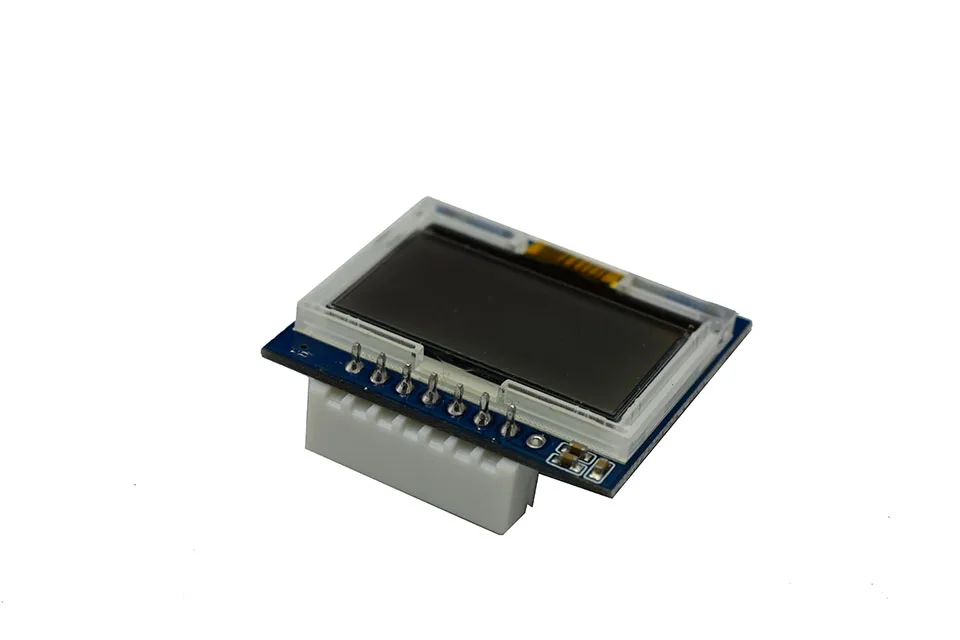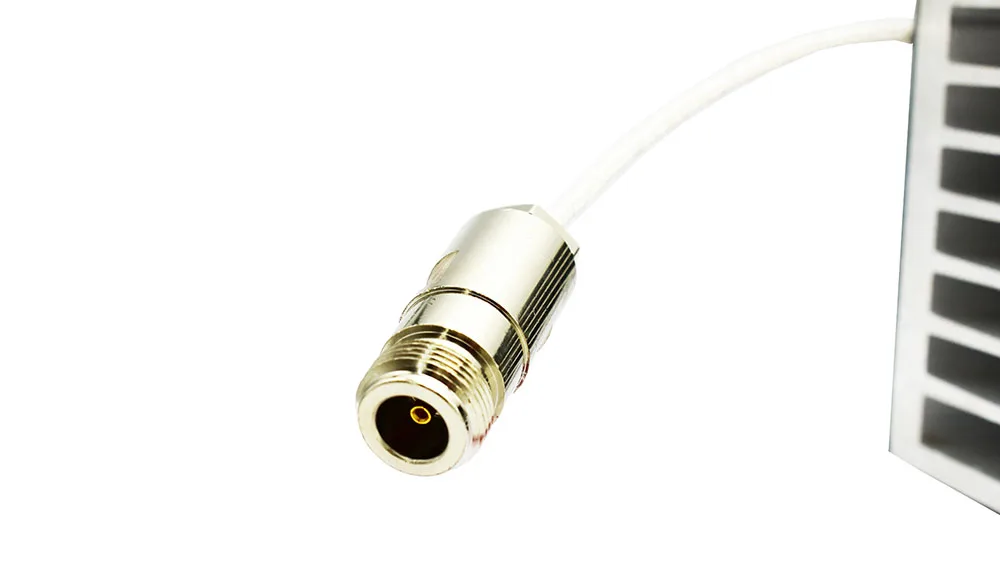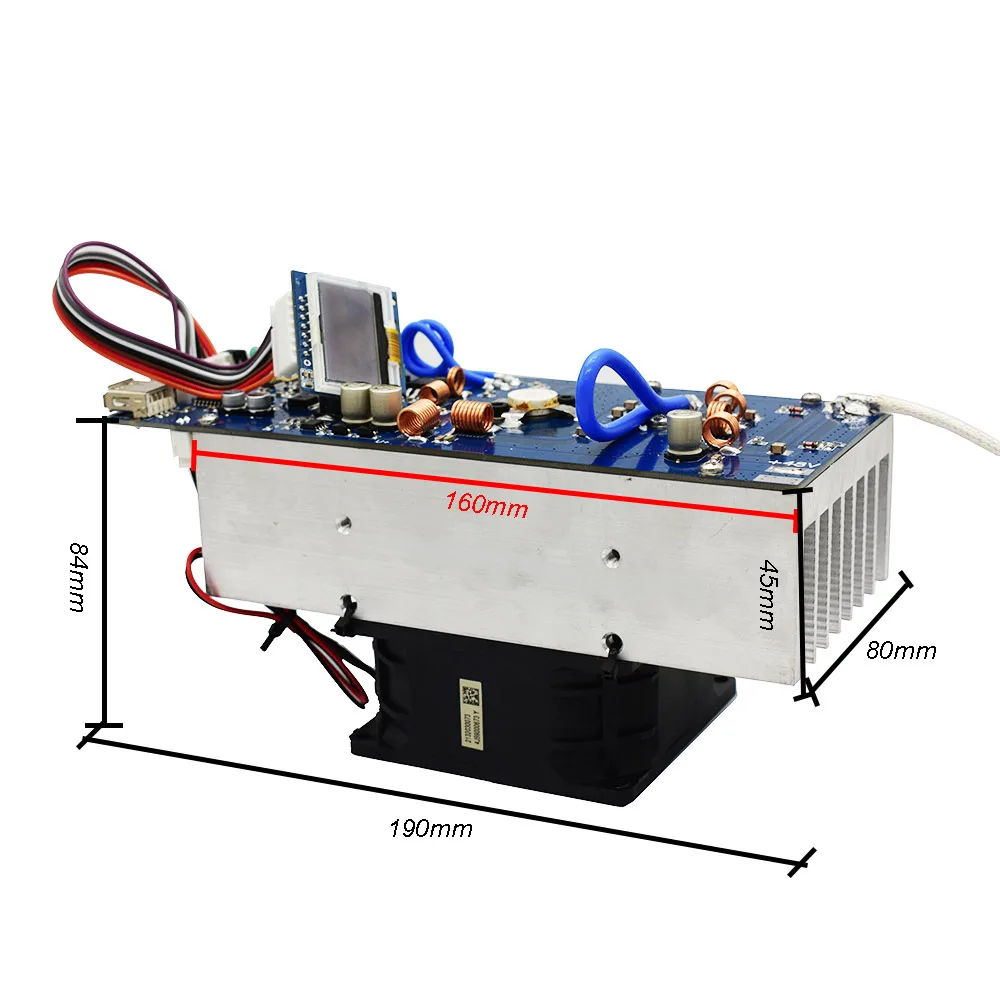Description
Note: Long-term emission requires increased heat dissipation.
Parameters
1. Input Voltage: DC 48V
2. Input Current: Less than 8A
3. sound signal: maximum input VPP is less than 1V
4. Output power:150W(-20%~+40%)
5. Output impedance: 50Ω
6. operating frequency: 76M-108MHz
7. stepped frequency: 0.1MHz
8. distortion factor: 0.03%~0.1%
9. PCB size (L x W x H mm): 190×80×90 (excluding the ledge)
10. Transmission range:> 15KM ( in open field with high enough antenna)
11. Stereophonic separation degree: > 63db
12. Harmonic suppression: <-60dbc
2.Volume setting: After pressing the middle mode button, the display frequency will automatically switch the display of frequency, volume and power. When the display switches to volume, you can adjust the volume at this time by adding or subtracting buttons.
3. Power setting: After pressing the middle mode button, the display frequency will automatically switch the display of frequency, volume and power. When the display switches to power, the power can be adjusted by adding or subtracting buttons. Power can be set from 0-100%.4. The three modes, namely, frequency, volume and power is known as setup mode, and the non-modify mode is called the main interface mode. When all parameters are set up, one can switch to the main interface through the intermediate mode, or wait 3-4S after the movement of pressing keys can not be detected by the system, then it will switch to main interface automatically.
The antenna generally has a bandwidth and a center frequency. If it is not transmitted at the center frequency, the standing wave will be better. Because the power is large, the standing wave is slightly larger and it is easy to burn the machine.
High-power transmission must pay attention to the matching of the antenna, and the mismatch is fine for a short time. The time is a little longer, even the best heat dissipation is useless
Several announcements about the transmitter:
1. Transmitting distance: The transmitting distance is mainly determined by the height of transmitting antenna, antenna gain, transmitter power, actual transmitting environment and the sensitivity of receiver. If the distance is not too far in using the transmitter, one can significantly increase the transmitting distance by enhance the height of transmitting antenna.
2.Regarding the audio input, the volume input should not be too large, and saturation 2,distortion is likely to occur in the assembly. So when the audio distortion occurs, try to lower the volume input.
3,The percentage of output power is a non-linear relationship. Therefore, the power percentage is only for the convenience of the user to adjust different power. The actual power is subject to the output test. The same voltage standing wave ratio is only a rough reference value and is not very accurate.
4,The transmitter antenna output must be connected to a standard 50 ohm transmitter-specific antenna with a center frequency that must match the transmit frequency. The antenna must be 10 meters away from the transmitter. Never use other non-professional antennas. Otherwise, the transmitter will not be responsible for burning it! Or it can be tested with a dummy load of not less than 300W50 ohms.
5,The power supply must meet the output capability of 8A, and the voltage is 48V regulated DC power supply.
6,The transmitter is protected against standing wave protection. If the standing wave is too large, the output power will be automatically reduced to ensure that the transmitting tube is not burned out.
50W RF FM transmitter amplifier:


Note: The above test data is for reference only. The actual test power of each device is different due to the test temperature and the parameters such as test cable and power meter. Therefore, the actual test data will be biased.








87.5M-108MHz 50W Maximum up to 70W Stereo RF FM transmitter
Payment & Security
Payment methods
Your payment information is processed securely. We do not store credit card details nor have access to your credit card information.
Security



























